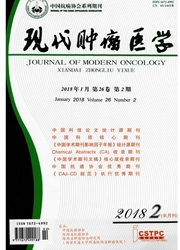

 中文摘要:
中文摘要:
目的 旨在探讨一种以计算机辅助设计和快速成型技术为基础,结合精密铸钛工艺,预成钛网支架,进行上颌骨缺损个体化匹配与修复的新方法。方法 以患者上颌骨螺旋CT作为修复设计的原始数据。经医学图形软件及反求软件处理,利用人体左右基本对称的原理,通过镜像健侧对应部位的数据获得缺损区修复数据。经激光快速成型机加工,获得修复体的树脂模型。将树脂模型翻模铸造,置换成生物相容材料-钛合金修复体,消毒备用,手术植入患者体内。结果 修复体表面平整光滑,无翻翘、开裂等变形,修复体与患者缺损区骨断端贴合紧密,就位顺利,植入与健侧具有较佳的对称性,患者面部畸形改善情况满意。结论 以计算机辅助设计和快速成型技术为基础,结合精密铸钛工艺制作的修复体精度高,和患者的匹配性佳,体现了个体定制化修复的特点,是进行单侧上颌骨缺损修复的一种有效方法,值得推广应用.
 英文摘要:
英文摘要:
Objective The purpose of this study was to discuss a new method for individual match and reconstruction of maxillary defect , which based on computer aided design and rapid prototyping, combined with exact foundry titanium technics, prepared titanium mesh. Methods The helical CT data was used for the original data of restoration design. The data were dealt with medical image software and reverse software, because the body is eudipleural, The restoration data of defect area were acquired by mirroring healthy corresponding part. The data were managed by rapid prototyping machine, then acquired the resinous model of restoration, founded the resinous model, permuted the resinous model by biocompatible material - titanium metal, thus, the design was finished, the restoration could be sterilized and implanted the patient's body. Results The surface of restoration is smooth, without tilt and dehiscence. The connection between the restoration and the patient's defect bone surface were close. The restoration filled its shoes successfully, had preferable symmetry with the healthy part, implanted the patient's body successfully. The improvement of the patient's deformity was satisfactory. Conclusions The restoration based on computer aided design and rapid prototyping, combined with exact foundry titanium technics, the results suggest that the restoration was precision and matched the patient well. The restoration embodied the characteristic of individual customized repair. The method was efficient for reconstructing unilateral maxilla defect. It is recommended for popularization.
 同期刊论文项目
同期刊论文项目
 同项目期刊论文
同项目期刊论文
 期刊信息
期刊信息
